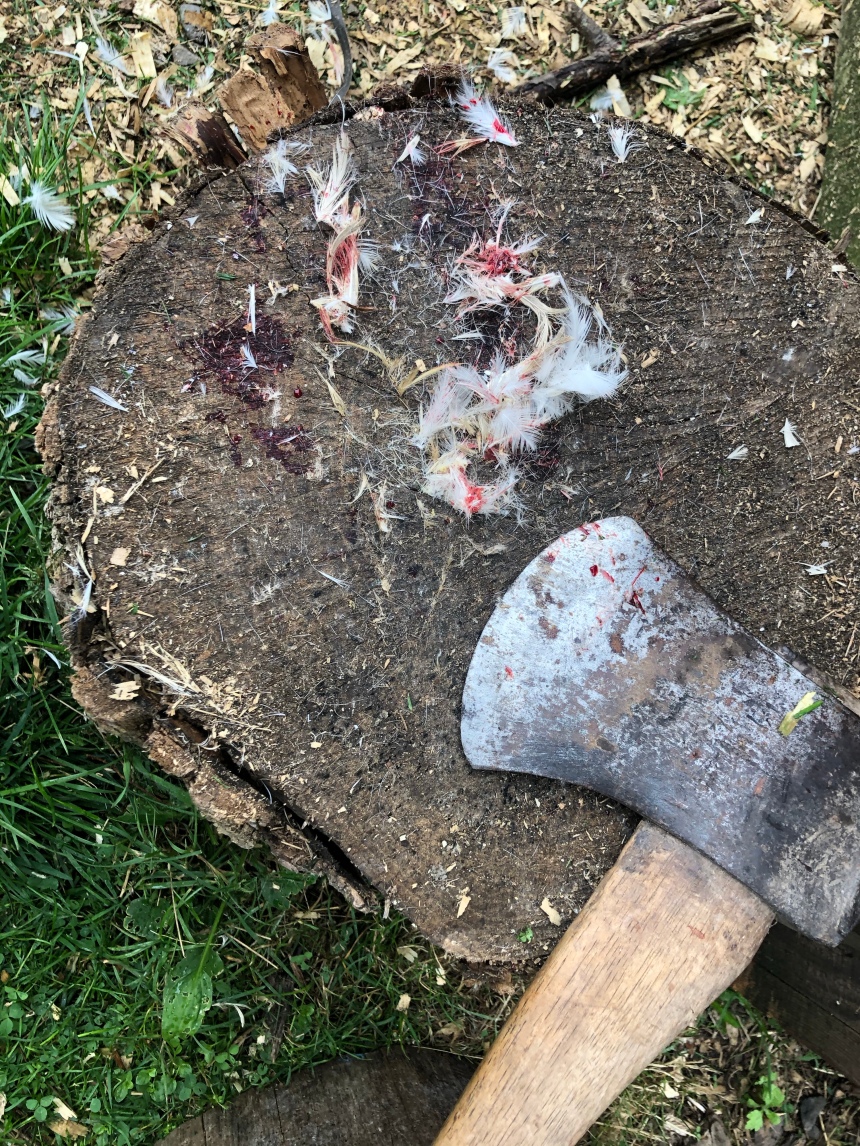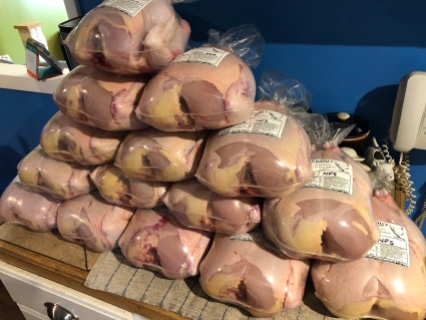Raising your own chicken dinners


We have been raising our own meat birds for years. It was a natural progression from raising laying hens. We raise cornish crosses and raise about 25-50 birds a year. We also butcher our own birds. This allows us to to see these birds go from chick to table. When the recent pandemic started we didn’t look for toilet paper and bread, we ordered chicks and canning supplies. Knowing we had several birds in the freezer also gave us comfort as everyone around us scrambled for protein. We knew the hysteria was real when we had to wait over a month for our chicks. When the birds came to us from the post office they were like a peeping bundle of hope. We then knew we had 25 more dinners for our family. We started them in our garage in a brooder made of recycled cardboard.
As long as you keep them warm and dry with plenty of water, these chicks thrive. The heat lamp we use is hung by a chain from the ceiling to keep it from falling accidentally and igniting the bedding and cardboard. Our safety is as important as theirs. Once the chicks are a few weeks old, we move them out to the coop. The smell they produce makes it impossible to keep them in the garage any longer than that. Frequent changes of bedding is essential. In the coop we again have a heat lamp hanging from a chain for them. The extra room in the coop allows them to move away from the light if its too warm. Once they have feathers, we allow them some outdoor time as we want our birds to live their best life. The genetics of these birds makes them very large, which also makes them very slow. We can’t let them free range as they would be easy pickings for a predator, so the outside space we give them is fenced in. This year we planted a cover crop of groundhog radish in their outside yard.

The cover crop served several purposes. First it looks a lot better than dirt, and it also helps break own some of the chicken poop. It provides cover for the birds to hide in. Most importantly, they eat it, and in fact, they loved it! Every day when we open the outside door of the coop, the birds would run out and enthusiastically and gorge on the green parts of the radish plants. We have also found that the radish loosens the soil. The more the birds ate the more they grew.
The birds grew fast and in nine weeks it was time to say goodbye to them

We have found that using an ax is the quickest way to dispatch the birds. We did have a few broken wings but now we drop them on their backs once the head is removed and it keeps them from flapping their wings too hard. We did a Youtube video that covers the process
With the butchering done, the birds head inside to be put in shrink bags. Tracy does a wonderful job of not only getting the bags just right, but also the labeling.
The prices truly indicate how we feel about out these birds. Raising our own meat has allowed us to reduce our dependency on the super markets. The recent pandemic has pushed us to do more to be independent of the conventional food supply chain. Raising these birds is like raising a little bit of freedom.






Nice new Blog!
LikeLiked by 1 person
Thanks so much
LikeLike
That was great. Thank you for some fresh new ideas.
LikeLiked by 1 person
Thank you for taking the time to read the blog we are always looking for new ways of doing thing most times they fail haha
LikeLike
I hear you. I have the best success redoing what I did wrong the 1st time. It’s a steep learning curve.
LikeLiked by 1 person
Yes can cost a whole year of work sometimes
LikeLike
Reblogged this on two branches homestead.
LikeLike
Excellent work. Always well written. Always well loved .
LikeLiked by 1 person
Thank you so much really appreciate it
LikeLike
Thanks for sharing with the video! I don’t even have chickens (not sure hubby will ever agree to that) but I want to know what to do!
LikeLike
thanks so much for taking the time to reach out im sure you will get your chickens one day maybe try making his favorite dinner haha
LikeLike